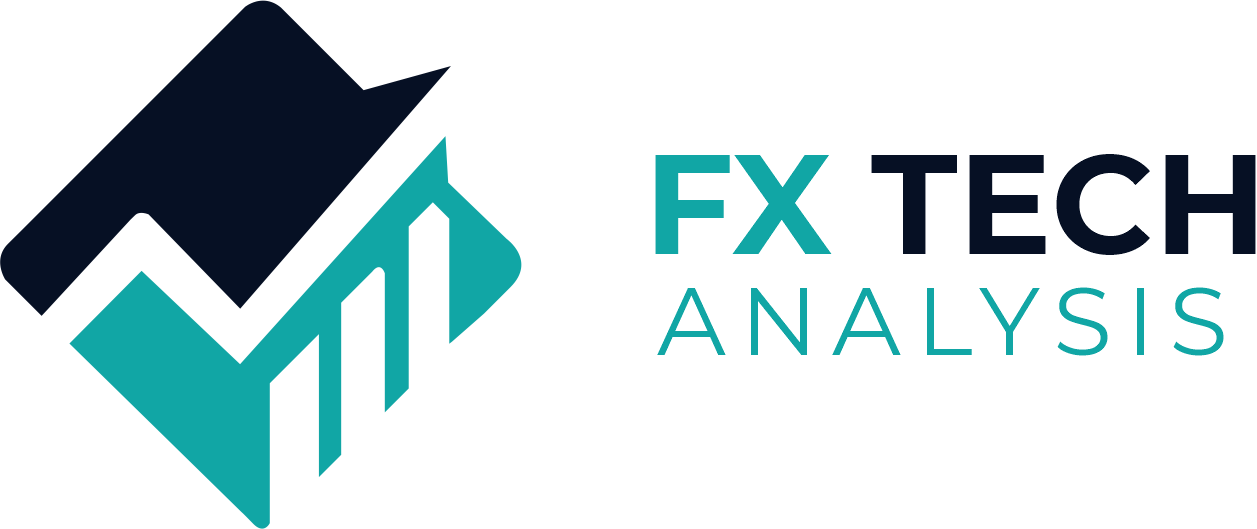Introduction
AI chart pattern detection in financial markets is no longer theoretical. In forex trading, AI-driven systems are changing how traders identify, interpret, and act on chart patterns. Traditional chart analysis once depended on manual observation and experience. Today, AI chart pattern detection systems can analyze thousands of data points in seconds, identifying hidden opportunities that humans might miss.
This technological shift isn’t just improving efficiency; it’s transforming how pattern recognition and trading signals work together. For fintech developers and data-driven traders, this marks a new era in algorithmic precision and automated decision-making.
In this guide, we’ll explore how machine learning trading and algorithmic pattern recognition are redefining forex strategy. We’ll also show how AI integrates with traditional forex chart patterns as discussed in our Master Guide to Forex Chart Patterns and Trading Signals to create smarter, faster, and more adaptive trading systems.
The Role of Chart Patterns in Forex Trading
Chart patterns have always served as visual representations of market psychology. They reveal the struggle between buyers and sellers, helping traders forecast potential price movements. Common formations such as triangles, head and shoulders, and double tops guide entry and exit decisions.
However, manual pattern recognition has limitations:
- Traders interpret patterns differently.
- Visual analysis can be time-consuming.
- Human error and emotional bias affect judgment.
AI solves these issues by applying consistent, data-based logic to pattern recognition, a foundation for algorithmic trading systems that operate with speed and precision.
What Is AI Chart Pattern Detection?
AI chart pattern detection refers to using machine learning models and neural networks to identify recurring structures in forex price data.
Instead of relying on fixed mathematical formulas, AI learns from historical data. It detects subtle shifts in price behavior that form the early stages of patterns like flags, wedges, and channels.
Once trained, the AI system scans live charts, flags potential formations, and generates trading signal confirmations for traders or automated bots.
Core Features of AI chart pattern detection:
- Speed analyzes real-time data across multiple timeframes in milliseconds.
- Accuracy Learns from large datasets, reducing false positives.
- Adaptability: Adjusts to changing market conditions without manual intervention.
- Automation Integrates seamlessly with trading platforms to execute trades automatically.
How Machine Learning Improves AI Chart Pattern Detection
Machine learning (ML) allows systems to learn from experience. In forex trading, this means an algorithm can improve its pattern detection accuracy by processing millions of past market examples.
1. Data Input and Training
ML models are fed with historical price data, including open, high, low, and close values. Algorithms then learn to identify relationships between these price points and known chart patterns.
2. Feature Extraction
Instead of looking at raw prices, AI identifies key features such as:
- Support and resistance levels
- Candlestick structures
- Price slope and momentum shifts
3. Continuous Learning
Machine learning models improve over time. With every new market movement, they refine pattern definitions, filtering out noise and reducing false alerts.
4. Predictive Power
Once trained, the model predicts probable outcomes. For example, after recognizing a bullish flag, it may estimate the likelihood of a breakout continuation.
This combination of learning and forecasting allows AI-driven pattern systems to evolve something static algorithms can’t achieve.
How Algorithmic AI chart pattern detection Works
Algorithmic pattern recognition uses rules and probability models to identify geometric structures on charts. While traditional algorithms follow fixed logic, AI-based systems incorporate adaptability.
Traditional Algorithmic Approach:
- Detects patterns using predefined mathematical rules.
- Works well for simple formations like double tops or triangles.
- Lacks flexibility for unusual or distorted shapes.
AI-Enhanced Approach:
- Uses neural networks to learn from multiple variations of a pattern.
- Adapts to noise, volatility, and irregular market conditions.
- Improves accuracy by analyzing volume, volatility, and sentiment data alongside price.
Benefits of AI Chart Pattern Detection in Forex
Implementing AI chart pattern detection gives traders and fintech developers several key advantages.
1. Objectivity
AI eliminates bias. It treats every setup with consistent logic, preventing emotional trading errors.
2. Scalability
AI systems monitor multiple currency pairs and timeframes simultaneously. This allows traders to find more high-probability setups without missing signals.
3. Accuracy
AI-driven tools validate breakouts, retests, and volume conditions before confirming a trade signal, improving reliability.
4. Speed
Real-time detection allows traders to act immediately after a valid pattern forms, ensuring they don’t miss opportunities.
5. Adaptability
Machine learning models adjust as market conditions change, unlike static technical systems that degrade over time.
Applications of AI chart pattern detection Recognition
AI integration extends beyond simple identification. Here’s how it’s transforming practical forex trading operations.
1. Automated Signal Generation
AI tools provide instant trade alerts based on recognized patterns and validated setups. These signals can integrate directly into trading dashboards or automated bots.
2. Strategy Optimization
Machine learning analyzes previous trades to optimize entry and exit rules. Developers can fine-tune their systems using back-testing data to improve performance.
3. Trade Execution Automation
Once a pattern is confirmed, AI-driven bots can execute trades instantly with pre-set risk parameters, reducing reaction delays.
4. Risk Management
AI assesses volatility and dynamically adjusts stop-loss and take-profit levels to align with market behavior.
5. Predictive Analytics
Deep learning models can forecast potential breakout zones based on prior pattern outcomes, helping traders plan.
These applications show how AI chart pattern detection can integrate seamlessly with broader algorithmic trading systems for superior decision-making.
Challenges and Limitations
Despite its strengths, AI pattern detection is not without challenges.
1. Data Quality
Poor data feeds or inaccurate price records can mislead models. Clean, high-quality historical data is crucial for training.
2. Overfitting
If a model learns the past too perfectly, it might fail to generalize to new conditions, a common problem in machine learning trading.
3. Black Box Behavior
AI decisions can be hard to interpret. Without transparency, traders might not understand why a signal was generated.
4. Infrastructure Costs
Training deep learning models requires powerful hardware and ongoing maintenance, which may not be accessible to every trader.
Addressing these challenges involves continuous monitoring, model retraining, and human oversight to maintain accuracy and trust.
Popular AI Techniques in Forex Pattern Detection
Different AI models contribute to more advanced pattern analysis.
1. Convolutional Neural Networks (CNNs)
Originally built for image recognition, CNNs excel at identifying geometric formations in price charts. They recognize visual features like triangles, flags, and head-and-shoulders shapes.
2. Recurrent Neural Networks (RNNs)
RNNs process sequential data, making them ideal for time-series forecasting. They help identify ongoing trends and anticipate breakout patterns.
3. Reinforcement Learning
This technique trains algorithms through reward-based outcomes, improving their ability to adapt trading decisions dynamically.
4. Natural Language Processing (NLP) Integration
Some advanced models combine NLP with price data to assess market sentiment from news, adding another dimension to pattern interpretation.
These AI methods continue to evolve, offering more reliable trading signals and adaptive pattern recognition capabilities.
How Fintech Developers Build AI Trading Systems
For fintech developers, creating an AI-based chart detection system involves several stages.
Step 1: Data Collection
Gather large datasets containing historical forex price movements and manually labeled chart patterns.
Step 2: Data Cleaning
Remove anomalies and ensure consistency across sources.
Step 3: Model Selection
Choose an appropriate machine learning algorithm, such as CNNs or RNNs.
Step 4: Model Training
Feed data into the model and allow it to learn pattern behaviors. This phase may involve several training iterations.
Step 5: Validation and Testing
Use unseen data to test the model’s ability to detect patterns accurately.
Step 6: Integration
Embed the trained AI system into trading platforms or APIs to deliver real-time algorithmic pattern recognition.
Integration with Traditional Chart Analysis
AI doesn’t replace traditional chart analysis; it amplifies it. Traders can use AI-generated patterns as validation tools alongside their manual analysis.
For instance:
- If a human spots a wedge, AI confirmation adds confidence.
- If AI identifies a triangle, traders can cross-check with price momentum and volume.
How AI Is Reshaping Forex Trading Education
Traders and educators are increasingly relying on AI for analytical insights. Learning platforms now integrate AI-based modules that visualize live patterns, explain signals, and simulate trading outcomes.
This shift makes complex pattern recognition concepts more accessible to beginners while allowing professionals to refine strategies based on quantified performance data.
Connecting AI Insights to Forex Chart Patterns
AI-driven pattern systems are built upon the same foundations explained in the Master Guide to Forex Chart Patterns and Trading Signals.
That guide explores the human logic behind forex chart patterns, trading signals, and chart analysis principles that now power automated systems. AI transforms these manual insights into data-driven algorithms capable of running continuously without fatigue.
By linking traditional knowledge with machine intelligence, traders gain a more complete perspective, blending structure with scalability.
Future of AI chart pattern detection
The future of AI chart pattern detection looks increasingly autonomous. Emerging trends include:
- Real-time adaptive algorithms that adjust instantly to market volatility.
- Integration with blockchain data for more transparent signal validation.
- Cross-market pattern detection, where AI identifies correlations between forex, crypto, and commodities.
- Explainable AI (XAI), offering transparency behind automated decisions.
Conclusion
AI is redefining how traders approach pattern recognition and trading signals. Through machine learning trading and algorithmic pattern recognition, systems can identify, validate, and act on price structures faster and more accurately than ever before.
For fintech developers, this transformation represents both a challenge and an opportunity to build systems that combine automation with interpretability. For traders, it’s a chance to improve decision quality through real-time confirmation and reduced bias.
By merging human intuition with intelligent automation, AI chart pattern detection stands as the next major evolution in forex chart patterns analysis, bridging classic technical methods with future-ready trading innovation.

